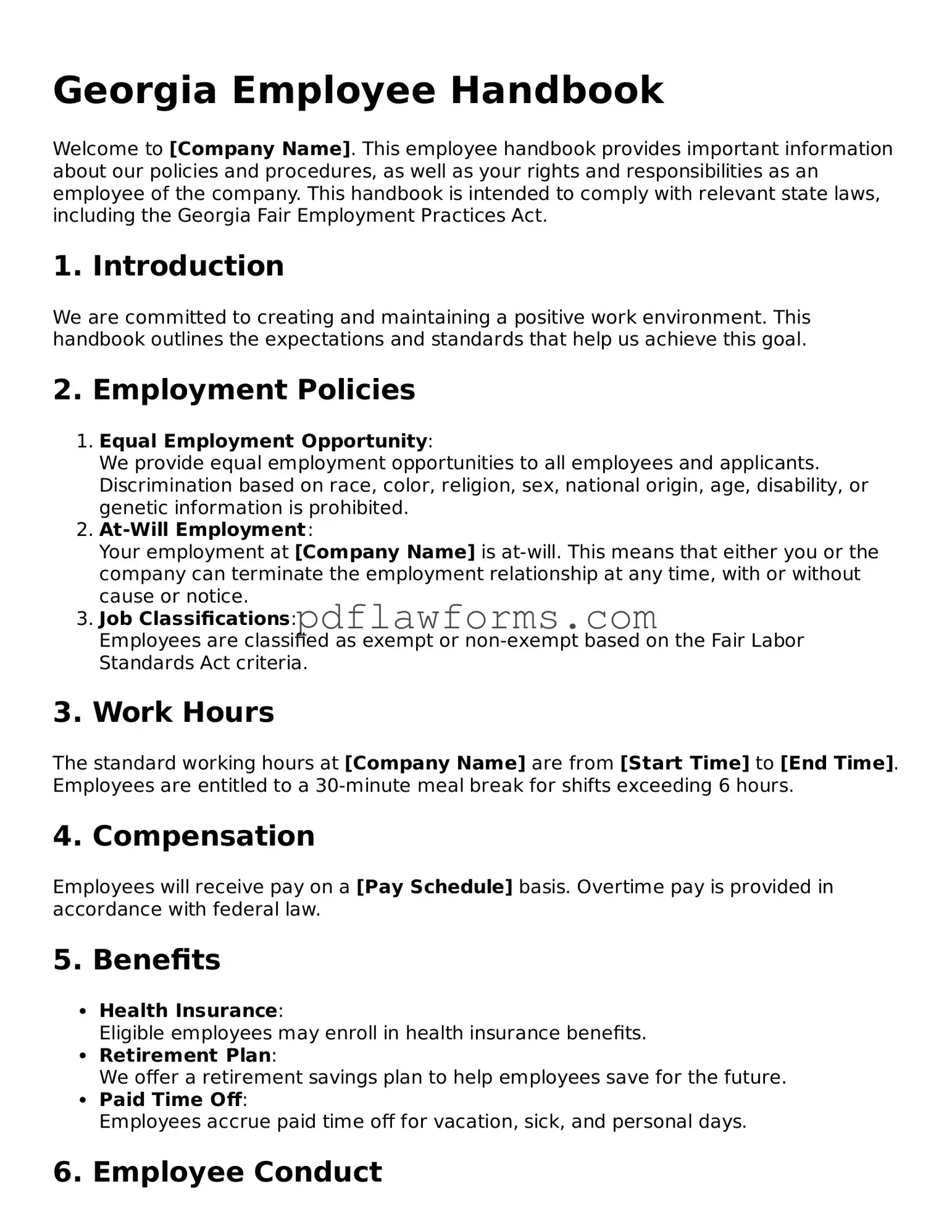Filling out the Georgia Employee Handbook form can be a straightforward task, but many individuals make common mistakes that can lead to confusion or even complications later on. One frequent error is neglecting to read the instructions carefully. Each section of the form has specific requirements, and overlooking these details can result in incomplete submissions.
Another mistake is failing to provide accurate personal information. When individuals enter incorrect names, addresses, or contact numbers, it can create significant issues for both the employee and the employer. Accurate information is crucial for effective communication and record-keeping.
Some people also forget to sign and date the form. A signature signifies agreement and acknowledgment of the handbook's contents. Without it, the form may be considered invalid. This simple step is often overlooked, leading to unnecessary delays in the onboarding process.
Additionally, individuals sometimes skip sections that they believe do not apply to them. However, every part of the form is important, and omitting information can lead to misunderstandings about company policies or benefits. It is essential to address all sections, even if they seem irrelevant.
Another common error is not updating the form when personal circumstances change. Life events such as marriage, divorce, or a change of address should prompt a review and update of the Employee Handbook form. Failing to do so can lead to outdated information being on file.
Some employees may also misinterpret company policies outlined in the handbook. This misunderstanding can lead to incorrect assumptions about benefits, work expectations, or disciplinary procedures. Seeking clarification on confusing sections is always a good practice.
Moreover, people often underestimate the importance of reviewing the entire handbook before signing. Familiarizing oneself with the company’s policies can prevent future conflicts and ensure that employees understand their rights and responsibilities.
Lastly, procrastination can be a significant hurdle. Waiting until the last minute to fill out the form can lead to rushed decisions and mistakes. Taking the time to carefully complete the form is essential for ensuring accuracy and compliance with company policies.
By being aware of these common pitfalls, employees can navigate the Georgia Employee Handbook form more effectively. Attention to detail and a thorough understanding of the form can pave the way for a smoother onboarding experience.
